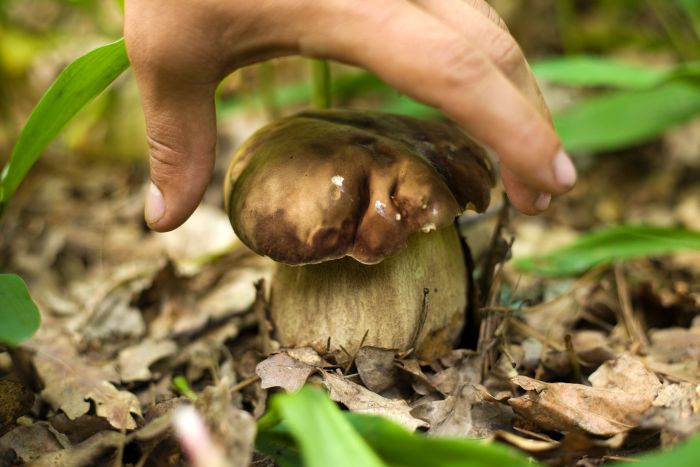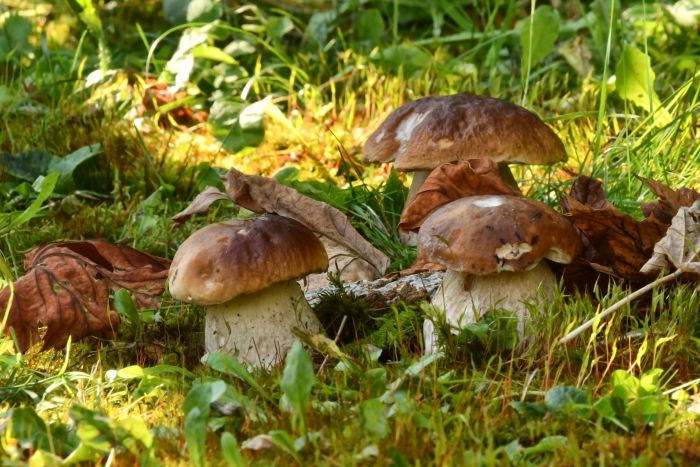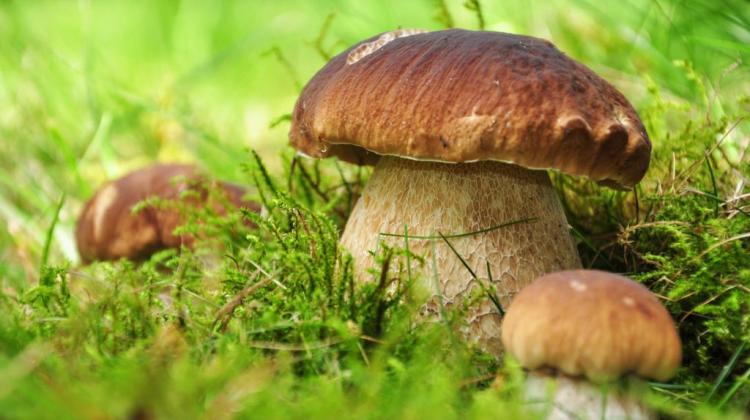Climate change will affect mushroom pickers, says expert
 Credit: Adobe Stock
Credit: Adobe Stock
Due to climate change, there will be fewer chanterelles and boletes in Polish forests, as these mushrooms are associated with trees from the pine family, scientists predict. Penny bun pickings may also be smaller. Mushroom pickers will instead pick summer cep, for example.
THERE MAY BE MORE MUSHROOMS...
Forecasted climate changes will affect the numbers and species composition of mushrooms in the baskets of future generations of mushroom pickers.
'The production of fruiting bodies of edible forest mushrooms in the years 2016-2100 will probably be 23 to 93% higher compared to current data, mainly due to the extension of the fruiting season, as a result of increased rainfall at the beginning of the season and higher temperatures at its end,’ says Dr. Marta Kujawska from the Institute of Dendrology of the Polish Academy of Sciences. She talks about the impact of climate change on the mushroom picker's basket as part of the film series Klimat na bioróżnorodność ('Climate on Biodiversity').
The fruiting body is the part of the mushroom that serves for reproduction. In 'classic' cap mushrooms, the fruiting body consists of a stem and a cap. However, the body of the mushroom is not only the fruiting body that we can see with the naked eye, but the entire mycelium. It is mostly a network of highly elongated cells (hyphae) invisible to the naked eye that penetrate the substrate (wood, soil, host tissues, etc.).
'The analysis of data from the years 1960-2010 regarding the occurrence of mushroom fruiting bodies in the Austrian and Swiss Alps shows that the fruiting bodies of ectomycorrhizal fungi, including edible mushrooms, appear in increasingly higher places, even over two meters per year,’ Kujawska says.
Interestingly, climate change affects the production of fruiting bodies in deciduous and coniferous stands slightly differently. 'No significant changes have been observed in coniferous stands over the last several decades, unlike in deciduous stands, in which the associated mycorrhizal fungi now produce fruiting bodies slightly later than in the 1970s,’ Kujawska adds. Deciduous trees are currently keeping their leaves slightly longer than before, which may translate into a slightly later start of fruiting production.

...BUT LESS OF SOME SPECIES
It is expected that the observed climate changes will completely change the structure of forests in Poland, which are dominated by coniferous habitats dominated by Scots pine. Climate change means that there will no longer be room for Scots pine, birch, spruce and larch. In the new, warmer climate, we will find fir, beech, pedunculate and sessile oak.
What effect will this have on fungi - and why? 'This situation may significantly affect the species of mushrooms that will appear in these altered forests and thus translate into the species structure of the basket of future mushroom pickers. The changing climate inevitably affects the Polish mushroom picker's basket primarily by affecting the functioning of the plant partner: the tree,’ says Kujawska.

A relationship called ectomycorrhiza occurs between the mycelium growing in the forest soil and the smallest tree roots, which is why we have mushrooms in forests. As a result of this relationship, characteristic ectomycorrhizal structures are formed on tree roots. These are places where substances are exchanged between partners.
'The plant partner, the tree, provides the fungal partner with carbohydrates produced in the process of photosynthesis. And the fungi provide the trees, with mineral compounds in an assimilable form and water taken even from the furthest corners of the soil,’ explains Kujawska.
She adds that 'by producing specific compounds, the fungal partner acts as a kind of shield, protecting the root system against pathogens and environmental contamination. This mutually beneficial reaction occurs in most tree species found in our forests, mainly in woody plants from the families: pine, beech, birch, willow, linden, hazel, etc.'
According to estimates, 60 percent of trees on the globe are trees with ectomycorrhiza, where individual trees can form a symbiosis with several dozen or even hundreds of species of ectomycorrhizal fungi at the same time, and individual ectomycorrhizas are numbered in millions per square meter of the forest.
'The topic of this obligatory relationship between mycelium and tree roots is still not sufficiently researched. That is why, for now, we cannot buy fresh wild mushrooms out of season,’ Kujawska says.
This distinguishes wild mushrooms from the popular champignons and oyster mushrooms.
Since climate change will affect the reduction in the pine population, among other things, the popular chanterelles and boletes, as well as slippery jacks, which are mainly associated with trees from the pine family, will probably become less available.
'The harvest of one of the most noble mushrooms - the penny bun - may also be limited due to its special association with coniferous forests', says Kujawska. In her opinion, 'in the next few dozen years, mushroom pickers will probably be forced to pick other species of mushrooms associated with tree species that will replace pine, for example the summer cep found under beeches, oaks and hornbeams.
'The changing climate inevitably affects the Polish mushroom picker's basket, primarily by affecting the functioning of the plant partner, the tree.’
She adds that it is now difficult to answer the question whether 'all the measures used in Polish forestry, related to the introduction of tree species that prefer a warmer climate, e.g. maple, linden, oak or beech, or even increasing the country's forest cover, will meet the needs of mushroom picking enthusiasts.
'The undiscovered world of fungi and their degree of adaptation to new climatic conditions hide too many secrets,’ she says, adding that fungi are organisms that show great plasticity. They are also the least known and most mysterious group of organisms.
OF THE 5 MILLION MUSHROOM SPECIES - 100 THOUSAND HAVE BEEN STUDIED
It is estimated that there are approximately 5 million species of mushrooms on the planet. Some scientists are increasingly pointing out that there may be up to 15 million fungal taxa. Among the great wealth of mushrooms, only 100,000 species have been described so far.
For 70 years, mushroom picking in the State Forests has been allowed for everyone and free of charge. Every year, a resident of Poland eats up to 10 kg of mushrooms. Mushrooms are a natural source of various bioactive substances. 'Current scientific research confirms the positive impact of these bioactive compounds in the treatment of many diseases, for example hepatitis, hypertension, asthma, nervous system diseases, circulatory system diseases and cancer, says Kujawska.
Forty-four species of forest mushrooms have been approved for trade and circulation in Poland. Currently, over 100 species of mushrooms are under legal protection. (PAP)
PAP - Science in Poland, Anna Mikołajczyk-Kłębek
kap/
tr. RL
Przed dodaniem komentarza prosimy o zapoznanie z Regulaminem forum serwisu Nauka w Polsce.


















